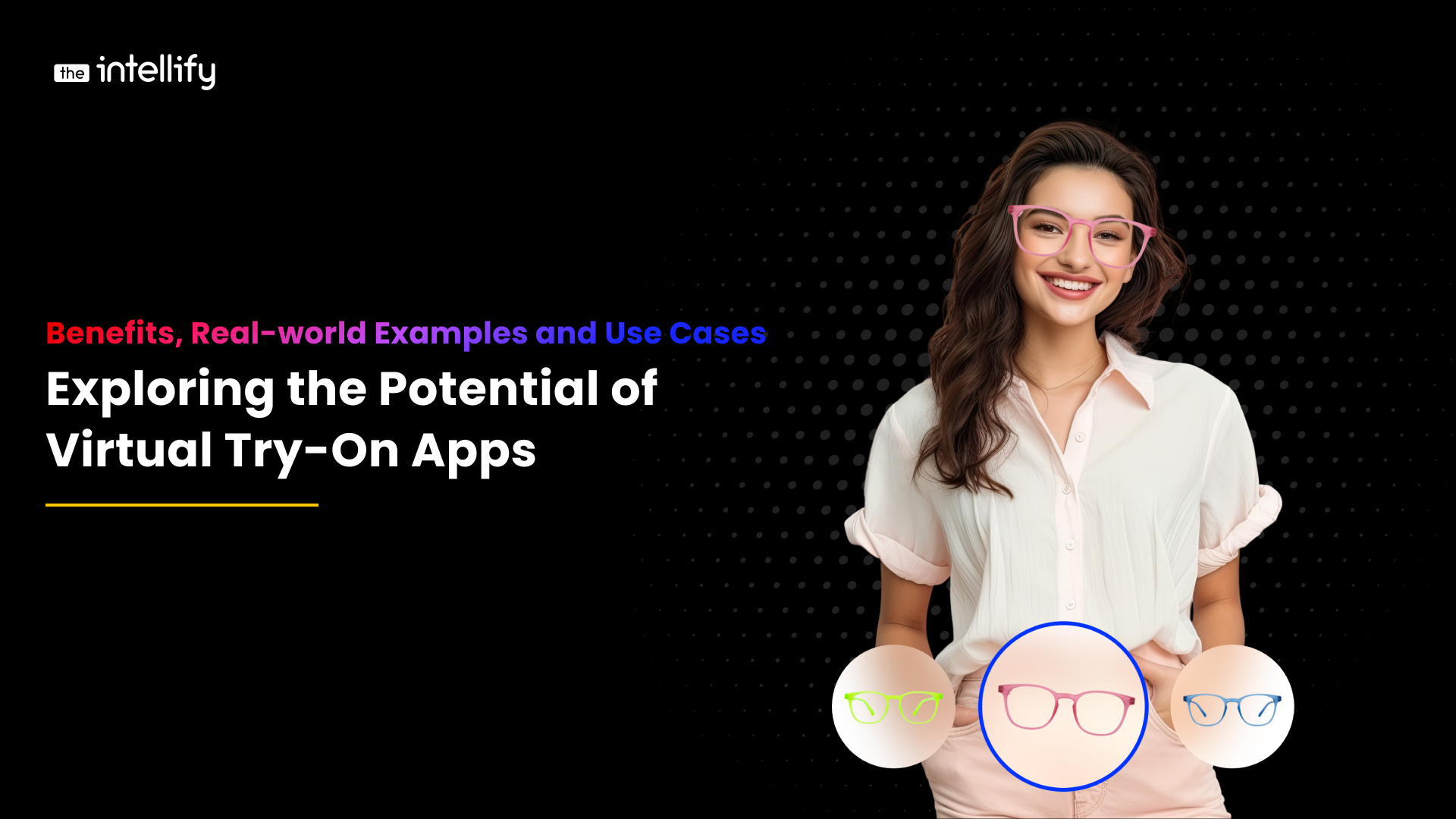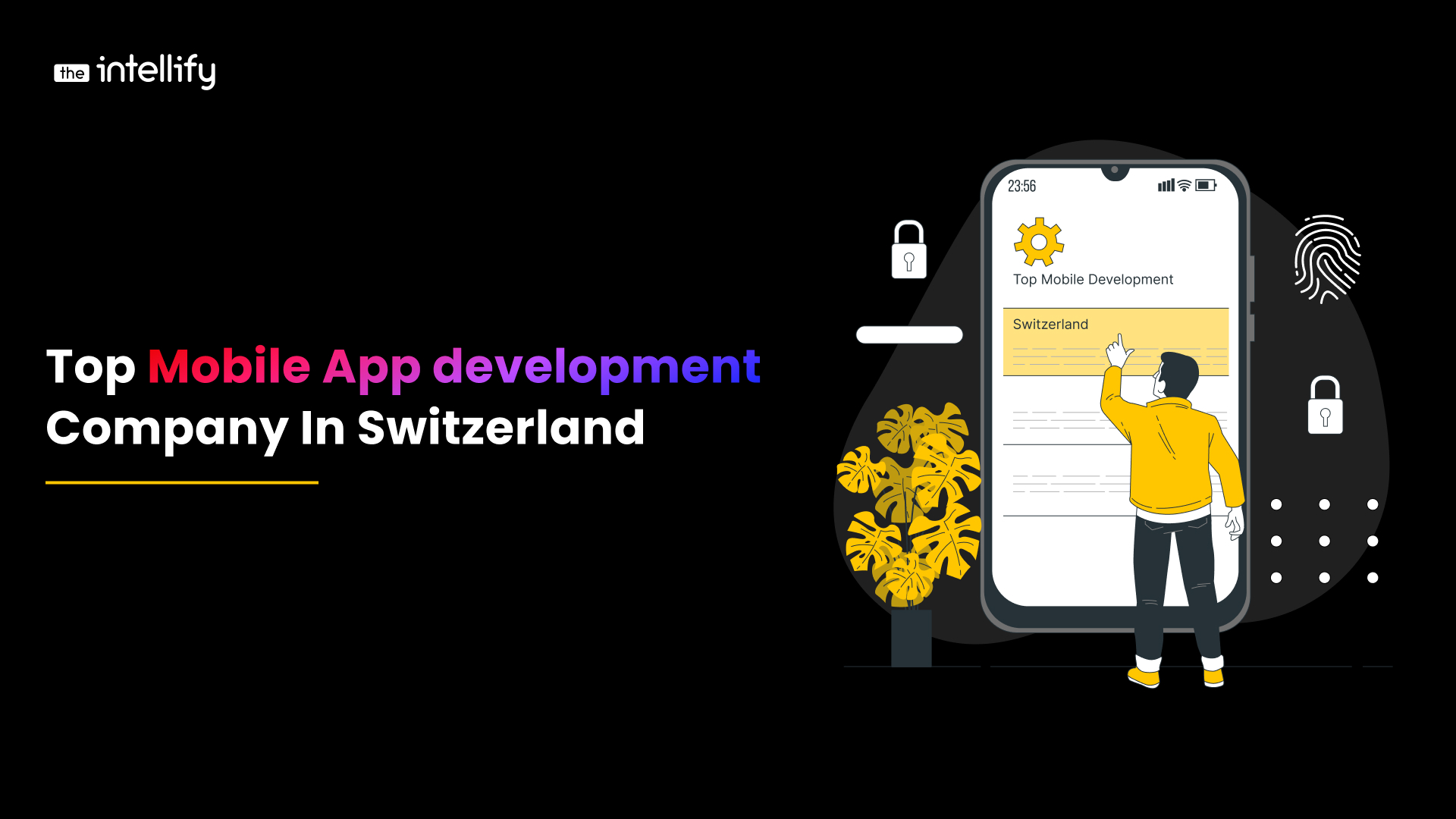
Virtual try-on app development lets users see products in real time, making them happier and more likely to buy. It helps businesses understand what customers like. And how they shop so they can improve their products and ads. With the virtual fitting room market expected to grow at a rate of 21.1%, it’s becoming a must-have for businesses aiming to stay ahead. Plus, these apps make people feel more connected to the brand. They love sharing their virtual try-on adventures with friends, which spreads the word about the brand far and wide.
The virtual try-on app development solutions market is poised for remarkable growth, with a projected compound annual growth rate (CAGR) of 25.5% expected by 2026. Businesses venturing into augmented reality (AR) and virtual reality app development, including those specializing in VR apps, are forecasted to amass large revenue, reaching a staggering $8.57 billion by 2023.
The prevalence of AR user devices is also rising. 2023 there were 1.4 billion active devices, projected to surge to 1.73 billion by 2024.
Additionally, consumer preferences are shifting towards platforms offering AR features, with a notable 61% of online shoppers preferring sites incorporating AR technology, particularly virtual try-on functionalities.
What Exactly are Virtual Try-on Apps?
A virtual try-on app is a digital tool that empowers customers to test products before purchasing, enhancing the online shopping experience. These apps improve customer satisfaction, decrease returns, and increase conversion rates by enabling users to visualize how products look or fit without needing a physical store visit.
Leveraging cutting-edge technologies like best augmented reality technology or artificial intelligence (AI), virtual try-on apps ease seamless product trials, elevating user engagement and confidence in purchasing decisions. Moreover, these apps offer businesses valuable insights into customer preferences, enabling them to refine their product offerings and tailor marketing strategies. By analyzing virtual try-on data, companies can identify emerging trends, stay proactive in meeting the evolving needs of their target audience, and maintain a competitive edge in the market.
Harnessing Virtual Try-on Apps for Enhanced Online Presence
Virtual try-on apps revolutionize the online shopping experience by allowing customers to try on products before purchasing. These innovative tools use advanced technologies such as augmented reality (AR) and artificial intelligence (AI) to simulate how products look or fit in real time, eliminating the need for physical store visits. Virtual try-on experiences offer businesses many opportunities to enhance their online presence and drive sales.
Virtual try-on apps offer businesses a competitive edge by providing a unique and engaging shopping experience. By allowing customers to try on products from the comfort of their homes, companies can differentiate themselves from competitors and attract more customers to their online platforms.
Moreover, virtual try-on apps help businesses boost customer confidence and reduce buying hesitation. By visualizing how products will look or fit before buying, customers can make more informed purchasing decisions, leading to higher conversion and reduced return rates.
Furthermore, virtual try-on apps offer businesses valuable insights into customer preferences and behavior. By analyzing data generated from virtual try-on sessions, businesses can better understand their target audience and tailor their product offerings and marketing strategies.
Additionally, virtual try-on experiences ease social sharing and word-of-mouth marketing. Customers are more likely to share their virtual try-on experiences with friends and family, increasing brand visibility and attracting new customers to the business.
By leveraging these innovative technologies, businesses can offer customers a more engaging and personalized shopping experience while gaining valuable insights into their preferences and behavior. As the e-commerce landscape continues to evolve, virtual try-on app types will play an important role in shaping the future of online retail.
Leading Brands Using Virtual Try-On Apps for Their Advantage
Virtual try-on apps have become a cornerstone for many brands across various industries, revolutionizing how customers shop and interact with products. Fashion powerhouses like Gucci, Burberry, and Chanel are leveraging augmented reality (AR) to offer virtual try-ons and immersive marketing experiences, enhancing customer engagement and driving sales. , athletic giants like Nike and Adidas use virtual try-on features to ensure customers find the perfect fit for footwear or apparel.
Beyond fashion, beauty retailers like Sephora embrace virtual try-on technology, allowing customers to experiment with makeup products and find their ideal shades and styles. Eyewear brands such as Warby Parker are also jumping on the virtual try-on bandwagon, enabling customers to try on glasses and sunglasses, simplifying the selection process. Even automotive brands like BMW are getting in on the action, allowing customers to configure and visualize cars with different colors, trims, and accessories, all from the comfort of their homes.
Furthermore, virtual try-on apps aren’t limited to traditional retail sectors. Tattoo brands like Inkhunter are tapping into expanded reality, allowing users to try on tattoos before committing to permanent ink. This innovative approach enhances the shopping experience and empowers customers to make more confident and informed purchasing decisions.
A Step-by-Step Guide to Developing a Virtual Try-on App
From initial research to app launch and beyond, each step is crucial for success in this dynamic virtual try-on solution.
Research and Objectives: Research market trends and define clear objectives for your app that align with strategic goals.
Feature Selection: Choose advanced features like facial recognition and seamless e-commerce integration to enhance user experiences.
UI/UX Design: Focus on intuitive design to captivate users and ensure smooth navigation within the app.
Prototyping and MVP: Develop prototypes and MVPs to test concepts and gather user feedback early in the process.
Backend Integration: Integrate backend systems and APIs to support essential functionalities like product management and payment processing.
AR Implementation: Install augmented reality (AR) to offer realistic try-on experiences, leveraging AR frameworks and computer vision.
Testing and Iteration: Conduct thorough testing and iterate based on user feedback to refine features and improve quality.
Launch and Maintenance: Launch the app and check performance post-launch to optimize marketing efforts and drive adoption.
By following these steps, businesses can develop the impact of virtual try-on apps that stand out in the market, delight users, and drive business growth.
Leveraging the Advantages of Virtual Try-on Apps for Businesses
Personalization & Shopping Experience
Virtual try-on apps enable businesses to personalize each customer’s shopping journey, offering tailored product recommendations and styling suggestions. This customized strategy enhances the bond between the brand and its customers, boosting engagement and loyalty.
Increased Sales and Reduced Return Rates
Virtual try-on apps mitigate the likelihood of returns by allowing customers to preview products before purchasing. This leads to business cost savings, a seamless shopping experience, higher conversion rates, and increased sales volumes.
Customer Satisfaction & Confidence
Virtual try-on apps for businesses provide customers with a more engaging and satisfying virtual reality shopping experience. They allow customers to visualize products and make confident purchasing decisions. Satisfied customers are likelier to return and recommend the brand to others, bolstering brand reputation and loyalty.
Engagement & Social Sharing
Encouraging active customer participation and virtual try-on apps for businesses drive higher levels of engagement with the brand. Customers are inclined to share their virtual try-on experiences on platforms like AR social media filters, amplifying brand visibility and reach through user-generated content and word-of-mouth marketing.
Data-Driven Insights & Product Optimization
Businesses gain valuable insights into customer preferences and behaviour by analyzing user interactions with the impact of virtual try-on technology. This data-driven approach enables enterprises to make informed product development and optimization decisions, enhancing market relevance and maximizing sales potential.
Accessibility & Convenience
Virtual try-on apps for businesses democratize the shopping experience, making it more accessible and convenient for all customers regardless of location or physical abilities. This removes barriers to entry and allows firms to tap into new market segments, expanding their customer base.
Competitive Advantage & Market Differentiation
Offering virtual try-on apps sets businesses apart from competitors by providing a unique, immersive shopping experience. By staying ahead of industry trends and embracing digital innovation, companies can position themselves as leaders in their respective markets, gaining a competitive edge.
Future-Proofing Your Retail Strategy
So, the benefits of Virtual try-on apps represent a forward-thinking approach to retail that future-proofs businesses against evolving consumer preferences and technological advancements. By investing in digital solutions today, companies can adapt to changing market dynamics and remain relevant in a competitive landscape.
The Unique Use Cases of Virtual Try-on Technology
Aapprel apps
Virtual try-on clothes apps allow users to visualize how fashion, professional, or workout clothing will fit and look on their bodies. This empowers users to choose the right size and style for their needs, enhancing the online shopping experience and reducing the likelihood of returns.
Eyewear Apps
Virtual try-on app technology use cases in the eyewear industry enable customers to see how different frames will look on their faces, aiding in informed decision-making when selecting glasses or sunglasses. Users can explore various options and find the perfect fit by virtually trying on frames.
Beauty and Makeup Apps
These apps revolutionize the beauty industry by allowing users to try on various makeup products virtually. With advanced augmented reality technology, users can experiment with different lipstick shades, eyeshadows, and foundation colors, achieving the perfect look without physical testers.
Home Decor Apps
Virtual try-on apps for home decor empower users to visualize furniture and decor items in their living space before buying. By virtually placing items, users can see how different pieces will look and fit, ensuring a cohesive and stylish home environment.
Jewelry Apps
In the jewelry industry, virtual try-on apps enable customers to see how different pieces of jewelry will look when worn. Whether it’s rings, necklaces, or earrings, users can find the perfect piece for any occasion by virtually trying them on.
Cosmetic Surgery Apps
Cosmetic surgery employs virtual try-on applications to allow patients to see potential results before undergoing procedures. Patients can make informed decisions and manage expectations by seeing simulated results beforehand.
Entertainment and Gaming Apps
Virtual try-on apps create immersive entertainment and gaming experiences by allowing users to try on virtual costumes or accessories within games or virtual reality environments. This enhances user engagement and enjoyment of the gaming experience.
Business Logistics apps
Businesses leverage virtual try-on technology to streamline inventory management processes. By visualizing products, companies can optimize stock levels, reduce excess inventory, and improve efficiency in logistics operations.
Tourism apps
Virtual try-on apps in the tourism industry offer immersive experiences for travellers when planning their trips. Through virtual tours of hotels, resorts, attractions, and landmarks, users can explore accommodations and experiences before booking, enhancing travel planning and decision-making.
See Also: Top Artificial Intelligence Trends
Effective Strategies for Virtual Try-on App Development
Rendering Optimization
Smooth and realistic rendering is vital for an immersive virtual try-on technology (VTO) experience. Explore techniques like level-of-detail (LOD) to optimize rendering based on the distance of the virtual product from the user. This ensures smooth performance without compromising visual quality.
High-Quality 3D Modeling
Invest in high-fidelity 3D models that capture intricate details like fabric texture, drape, and variations in colour and pattern. Techniques like photogrammetry can create realistic models from real-world products, forming the foundation of a successful VTO app.
Real-time Data Processing
Efficient real-time data processing is essential for VTO apps. Computer vision algorithms that detect body pose, track movements and position virtual products on the user’s image should be utilized. To maintain smooth app performance, consider leveraging cloud-based processing for complex calculations.
By incorporating these best practices and the benefits of virtual try-on apps into virtual try-on app development, you can create a captivating and standout experience in the competitive market. Focus on high-quality assets, optimize performance, and stay updated with the latest advancements in VTO technology to ensure success.
Looking into the Future of Virtual Try-on Technology
AI-powered Personalization
Expect personalization to reach new heights with the help of artificial intelligence (AI). AI can evaluate user data, purchase history, and social media preferences to create customized virtual try-on experiences and suggest styles that align with individual preferences.
The Rise of Virtual Fitting Rooms
The concept of physical fitting rooms might soon be revolutionized. Imagine stepping into a virtual fitting room within a retail app, where you can virtually try on countless outfits and even receive real-time feedback from a virtual stylist AI.
Enhanced Object Recognition
Object recognition technology is becoming sophisticated, allowing VTO apps to recognize users’ bodies and surrounding objects. Imagine virtually trying on a new pair of sunglasses and seeing how they complement your outfit.
As virtual try-on (VTO) technology continues to evolve, these emerging trends and possibilities promise to reshape how we shop and interact with products online. From personalized experiences to virtual fitting rooms, the future of VTO holds endless opportunities for innovation and convenience.
The Costs of Virtual Try-On App Development
Basic Virtual Try-On App
An entry-level app with simple product try-on functionality and limited customization options, it is ideal for exploring virtual try-on technology.
$32,000 – $60,000
Standard Virtual Try-On App
It offers enhanced product try-on capabilities, moderate customization, and an improved user interface. It is suitable for businesses seeking a polished experience.
$61,000 – $90,000
Advanced Virtual Try-On App
It features advanced AR or AI tech, extensive customization, a seamless UI, and e-commerce platform integration, appealing to discerning customers.
$94,000 – $150,000
Custom Virtual Try-On App
It is tailored to unique business needs with advanced AR or AI, personalized UX, and seamless integration. It requires ongoing support.
$152,000 – $250,000+
Summing up
In conclusion, virtual try-on app development in the digital landscape offers businesses unparalleled opportunities for growth and success. From enhancing customer satisfaction and boosting sales to revolutionizing the retail experience, these apps are reshaping industries.
By partnering with experienced developers like The Intellify, companies can unlock the full potential of virtual try-on apps, driving forward into a future defined by seamless digital experiences and unparalleled customer engagement.
At The Intellify, we are a leading AR, and VR. Web and Mobile App development company renowned for our technological prowess and customer-centric approach. With a strategic focus on understanding project intricacies, we deliver bespoke solutions tailored to businesses’ unique needs. Our services empower companies to seize a competitive edge, propelling growth and success in their respective industries.
Our commitment to excellence ensures that virtual try-on app development meets rigorous standards.
FAQs
1. How can virtual try-on technology be seamlessly integrated into an app?
Achieving seamless integration involves thorough research of reputable providers, careful evaluation of their offerings, and strategic development and incorporation of custom solutions into your platform.
2. What features are typically found in a virtual try-on app?
Virtual try-on app development integrates various features, including product visualization, AR/VR technology, customization options, real-time interaction, e-commerce platform integration, user profile creation, and social sharing functionalities.
3. How does virtual try-on technology contribute to sales?
Virtual try-on technology increases sales by reducing buy uncertainty, minimizing return rates, fostering greater customer engagement, expanding market reach, and providing valuable insights into customer behaviour.
4. What ongoing costs are associated with maintaining a virtual try-on app?
Beyond the initial development expenses, maintaining a virtual try-on app incurs ongoing costs such as server maintenance, software updates, and potential bug fixes. Additionally, utilizing cloud-based processing for real-time features may entail associated cloud service fees.
5. Is there a distinction between virtual try-on and augmented reality (AR)?
Virtual try-on (VTO) utilizes AR technology to simulate virtual products on a user’s body or surroundings, focusing on the retail space. So, VTO represents a specific application of AR tailored to enhance the shopping experience by enabling users to interact virtually with products before purchasing.

Written By, Jalaj Shah
The COO and Co-Founder of The Intellify. Jalaj enjoys experimenting with new strategies. His posts are fantastic for businesses seeking innovative development ideas. Discover practical insights from his engaging content.
Table of Contents
- What Exactly are Virtual Try-on Apps?
- Harnessing Virtual Try-on Apps for Enhanced Online Presence
- Leading Brands Using Virtual Try-On Apps for Their Advantage
- A Step-by-Step Guide to Developing a Virtual Try-on App
- Leveraging the Advantages of Virtual Try-on Apps for Businesses
- The Unique Use Cases of Virtual Try-on Technology
- Effective Strategies for Virtual Try-on App Development
- Looking into the Future of Virtual Try-on Technology
- The Costs of Virtual Try-On App Development
- Summing up
- FAQs
Ready to Build Your Own Web App?
Get a Quote Now

Real Estate Mobile App Development 101: All You Need to Know
Today, the real estate industry is improving with the help of new technology. Mobile applications are one of the major aspects of this shift. Real estate mobile app development has become crucial for such businesses, which must remain relevant. The applications benefit buyers, sellers, agents, and property managers. In the contemporary world, individuals desire convenience […]


Top Mobile App Development Company In Switzerland
In Switzerland, there are lots of companies that can build mobile apps. Finding the right company for your project can be tricky. You want a dependable, affordable company that can get the job done on time. The Swiss software development industry is on the rise! It’s expected to grow from $8.17 billion in 2024 to […]


The Intellify Recognized as a Clutch Global Leader for Spring 2024
The Intellify has been named a top B2B company for AR, VR, Mobile, and Web Development services Ahmedabad, Gujarat, India — The Intellify, Innovating App Development Company, today announced its recognition as a 2024 Spring Global Award winner for AR, VR, Mobile, And Web Application Development services on Clutch, the leading global marketplace of B2B service […]


Real Estate Mobile App Development 101: All You Need to Know
Today, the real estate industry is improving with the help of new technology. Mobile applications are one of the major aspects of this shift. Real estate mobile app development has become crucial for such businesses, which must remain relevant. The applications benefit buyers, sellers, agents, and property managers. In the contemporary world, individuals desire convenience […]


Top Mobile App Development Company In Switzerland
In Switzerland, there are lots of companies that can build mobile apps. Finding the right company for your project can be tricky. You want a dependable, affordable company that can get the job done on time. The Swiss software development industry is on the rise! It’s expected to grow from $8.17 billion in 2024 to […]


The Intellify Recognized as a Clutch Global Leader for Spring 2024
The Intellify has been named a top B2B company for AR, VR, Mobile, and Web Development services Ahmedabad, Gujarat, India — The Intellify, Innovating App Development Company, today announced its recognition as a 2024 Spring Global Award winner for AR, VR, Mobile, And Web Application Development services on Clutch, the leading global marketplace of B2B service […]

0
+0
+0
+0
+
Committed Delivery Leads To Client Satisfaction
Client Testimonials that keep our expert's spirits highly motivated to deliver extraordinary solutions.

Let’s start a Conversation about your Business Goals!
Drop us a line to Start a Project with us
Contacts For Business
Contacts For Career












